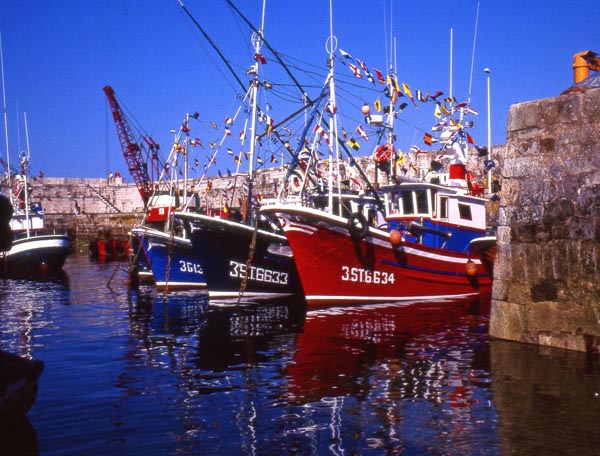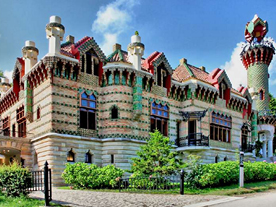The port is enclosed by a high dyke protected from the Northwest, Northeast and fierce North winds. The 9 metres access has a wooden sluice gate the fishermen close when the weather conditions and the undertow may damage their vessels.
The port’s construction cost the townspeople 30,700 ducados equivalent to 370 euros. It was begun in 1603 and finished in 1716, so for many years the fishing activity took place in the beach. The port was first defended by three watchtowers and a fort that had four pieces of artillery. Nevertheless, from its construction it was used more for fishing rather than for protection. Fishermen put out in small boats with harpoons, and whaling was the harbour’s main activity, so much that it was the last whaling port in the eighteen century. The whale stone, as it is known, was the place where fishermen butchered their catch. In the winter they fished for red-breams, conger-eels, in the summer it was time for sardines and tunas.
A long while ago this harbour exported blended and calamine from local mines and imported coal and cement.
It had its own fishermen’s association known as the Christ the Protector Association, established in the beginning of the fifteen century. Over the years the number of fishermen has decreased considerably and consequently the importance of this confederation.
The harbour has also an auction house, this is a popular construction situated on the west side of the port that was built in 1942 on the ancient warehouse of the mines’ company, Real CIA Asturiana de Minas. It consists of three attached buildings, a central one with two floors and the two other with one.
On a corner of the port is a high relief bronze plaque in memory of Jesus Cancio (1885-1961), the so-called Poet of the Sea”.
![]()
The walk is accessible by a pavement from the beach, there is a small step down from the pavement and the path continues along the road.






